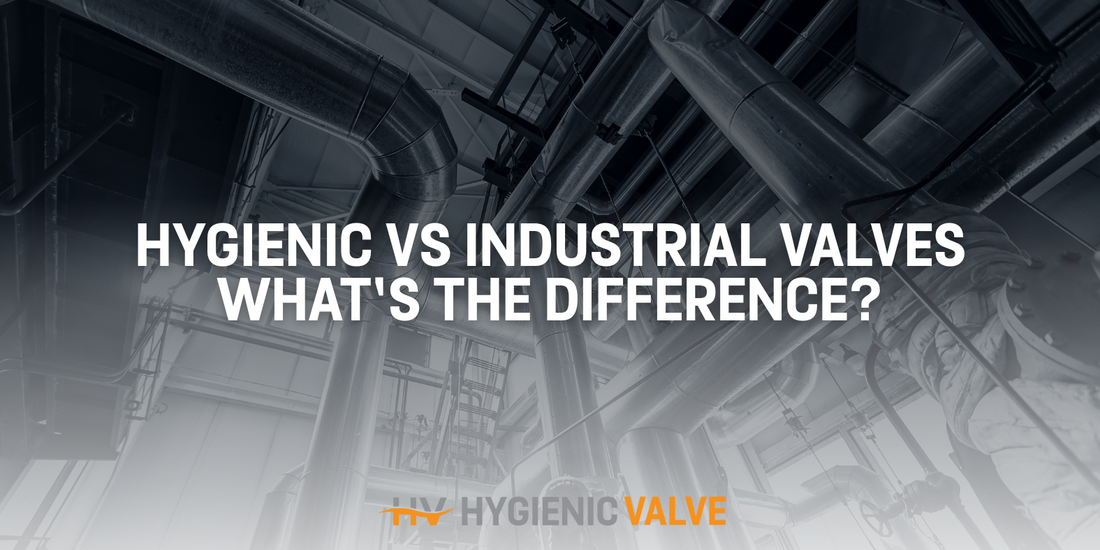
Hygienic vs Industrial Valves – What’s the Difference?
Share
Hygienic vs Industrial Valves: What’s the Difference?
In fluid process industries, valve selection is critical to ensuring safety, compliance, and performance. A common point of confusion arises when comparing hygienic valves vs industrial valves. While both serve the same basic function—controlling the flow of liquids or gases—they're designed for very different applications and environments. In this blog, we’ll break down the differences, where each type is used, and what makes hygienic valves essential in sectors like food, beverage, and pharmaceuticals.
Understanding Hygienic Valves
Hygienic valves—also known as sanitary valves—are designed specifically for applications where cleanliness and sterility are non-negotiable. These valves are manufactured using smooth internal surfaces, crevice-free joints, and FDA- or EHEDG-compliant materials like 316L stainless steel. Their design enables effective clean-in-place (CIP) or steam-in-place (SIP) procedures without the need to disassemble the system.
The most common hygienic valve types include:
- Hygienic butterfly valves
- Diaphragm valves
- Ball valves with cavity fillers
- Aseptic sampling valves
The primary aim is to prevent contamination, bacterial growth, or cross-contamination—making them ideal for food processing, dairy plants, pharmaceutical manufacturing, and cosmetic production lines.

What Are Industrial Valves?
On the other hand, industrial valves are built for durability, pressure handling, and chemical resistance in a wide range of non-sterile environments. They’re commonly found in sectors like oil & gas, water treatment, power generation, and general manufacturing.
Unlike hygienic valves, industrial valve designs often prioritise flow control efficiency, material hardness, and sealing integrity under harsh operating conditions. These valves might not be suitable for clean-in-place procedures, and their internal surfaces are not usually optimised for sterile environments.
Popular types of industrial valves include:
- Gate valves
- Globe valves
- Ball valves (standard, not sanitary-grade)
- Plug valves

Key Differences Between Hygienic and Industrial Valves
| Feature | Hygienic Valves | Industrial Valves |
|---|---|---|
| Primary Use | Sterile environments | General process industries |
| Material | 316L stainless steel, FDA-compliant | Cast steel, bronze, alloys |
| Finish | Polished, crevice-free | Machined, not always smooth |
| Cleaning Method | Clean-in-place (CIP), SIP | Manual or automated flush |
| Standards | EHEDG, 3-A, FDA | API, ASME, ANSI |
| Applications | Food, dairy, pharma, cosmetics | Oil & gas, water, chemical |
Which Valve Is Right for You?
Choosing between hygienic valves vs industrial valves comes down to the demands of your process. If you're operating in a hygienic or sterile environment, there’s no substitute for sanitary valve designs. Cleanability, material certification, and design standards are all vital for regulatory compliance.
However, in applications where sterility isn't required, industrial valves often offer a more cost-effective and robust solution. The key is to evaluate your environment, cleaning procedures, and regulatory requirements.
Conclusion
When deciding between hygienic and industrial valves, it’s crucial to align your selection with the application’s specific needs. If clean-in-place valves are a requirement, then only hygienic-grade options will ensure compliance and performance. But if your system doesn’t involve sterile processes, industrial valves may be more suitable.
At HygienicValve.com, we specialise in sanitary valve solutions that meet the highest industry standards. Whether you’re setting up a new production line or upgrading existing equipment, our team can help you select the right hygienic valve for the job.

